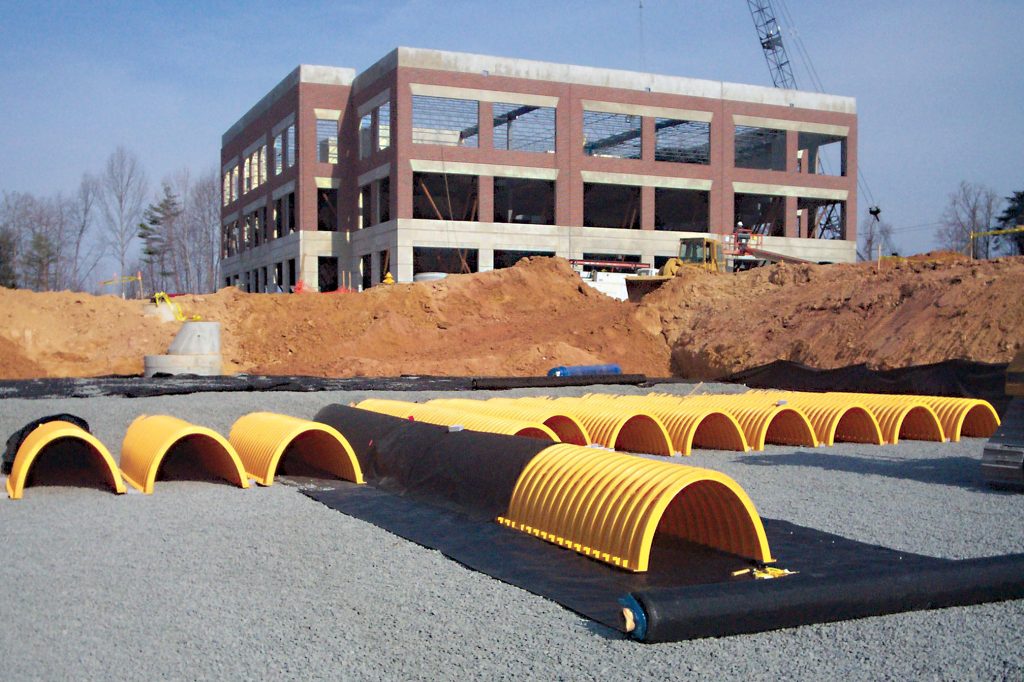Designers need a better understanding of the maintenance requirements of different SuDS components to ensure that the systems they design will perform as intended. Stuart Crisp, UK manager at Advanced Drainage Systems (ADS), reports.
The issue of SuDS maintenance has always been a thorny one. Research suggests that the question of who will be responsible for the maintenance, and the cost of it, has been a prime factor in their slow uptake in the United Kingdom.
With the Government’s intention to implement Schedule 3 of the Flood and Water Management Act 2010 (FWMA) in England, making the installation and adoption of SuDS mandatory, concerns over maintenance issues again come to the fore. Developers, designers and installers need to understand the maintenance implications for alternative solutions considered for a project (in addition to, for example, hydraulic performance, structural integrity and water quality) and then offered to the adopting body responsible for the long-term operation of the SuDS asset. For underground attenuation devices, these vary significantly.
The more onerous the maintenance requirements, the higher the risk of them not being properly executed. The impacts of poor maintenance regimes and difficult-to-clean systems can be significant, increasing the risk of blockages – leading to loss of capacity and flooding – and pollutants washing out into water bodies.
Guidance
The SuDS Manual, CIRIA C753, recognizes that underground attenuation crates are ‘difficult to clean’ and that their capacity will reduce over time. Section 21.5.3 of the manual recommends that the size of crates should be increased by 10% to allow for accumulation of sediment. This applies even when a maintenance programme is deployed, since it isn’t always possible to remove all sediment during cleaning. Commercial developments, high density residential development, car parks and highways face the highest potential loss of storage, according to the guidance.

For both crates and large diameter pipes, some form of silt separation and removal system upstream is normally required to slow down the rate of sediment build-up and to remove some of the pollutants that cling to those particles. These upstream components must also be inspected and cleaned at intervals prescribed in a SuDS maintenance plan.
In designing its StormTech underground attenuation device, ADS sought to remove the need for costly upstream pre-treatment. An inbuilt ‘Isolator Row’ – essentially a modified version of the standard StormTech elliptical arches – collects the sediment before the water moves into the main body of the system.
Independent tests have demonstrated that the Isolator Row removes over 80% of total suspended solids (TSS), together with the metals, hydrocarbons, phosphorus, nitrogen, and other surface water pollutants that cling to them. The Isolator Row is easily accessed via a closely located manhole, and can be cleaned out with standard sewer-cleaning equipment.
Natural SuDS need maintenance too
Natural SuDS, as well as engineered ones, also need regular and planned maintenance. These range from frequent interventions such as litter picking and inspection of inlets and outlets to more occasional and seasonal activities such as vegetation management and removal of silt build-up.
Again, failure to maintain natural attenuation components such as ponds can have negative impacts. A 2018 study of SuDS in East Kilbride by the University of Glasgow, published in The Glasgow Naturalist, found that pollutants in some SuDS ponds were hindering amphibian breeding and development and that more frequent monitoring and management would be wise.
Whether natural or engineered SuDS, or a combination, maintenance regimes and their associated cost, should not be a barrier to their implementation. However, it is important that maintenance issues are understood, planned and communicated at the earliest stages of a project.
For more information on Advanced Drainage Systems, visit www.adspipe.co.uk.